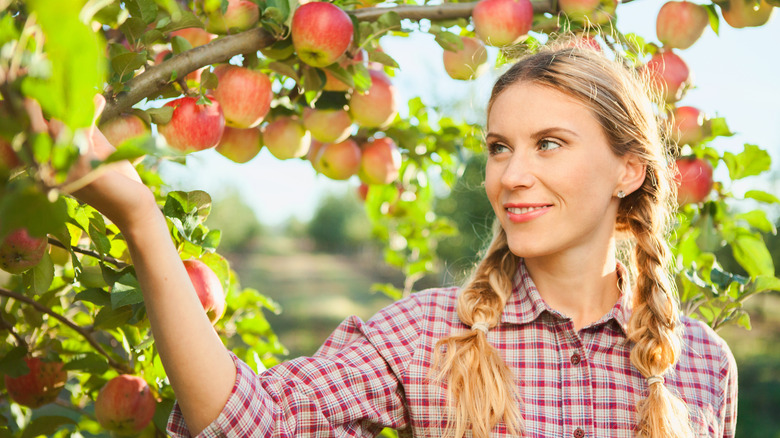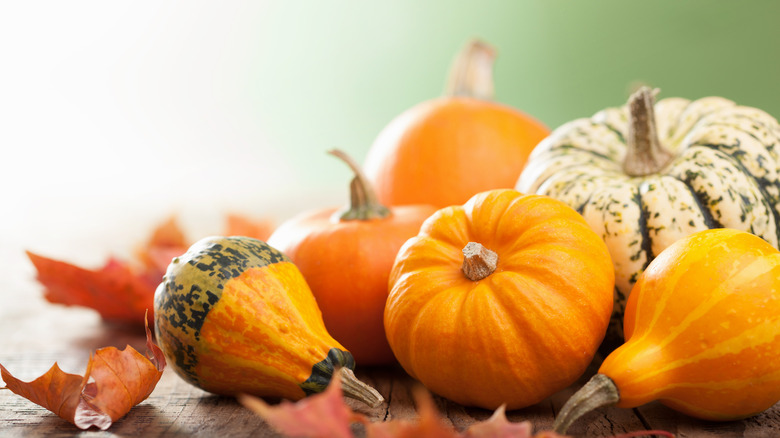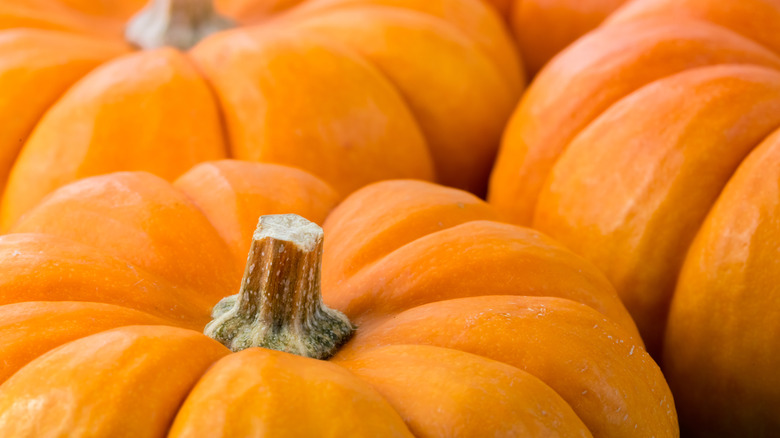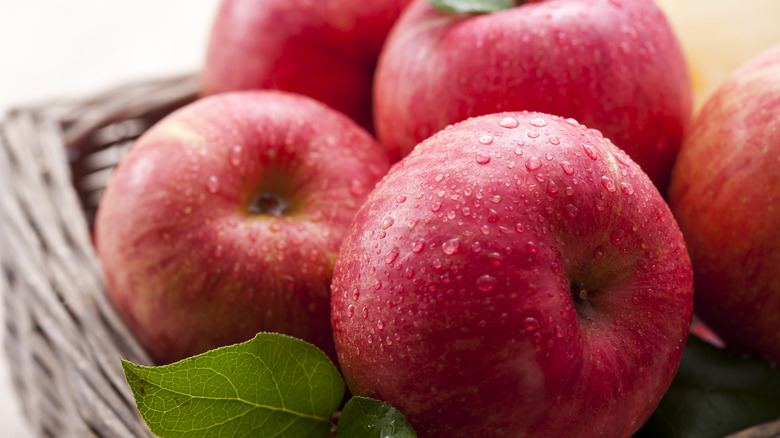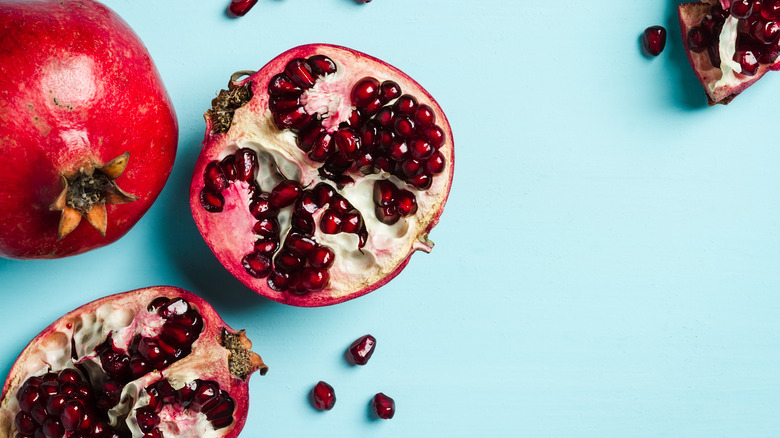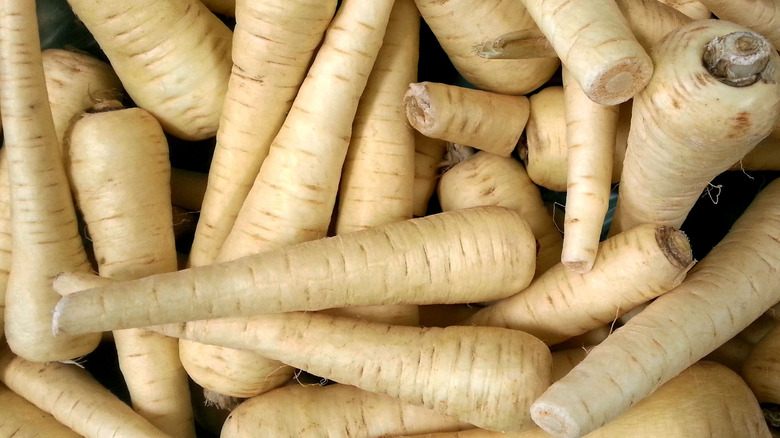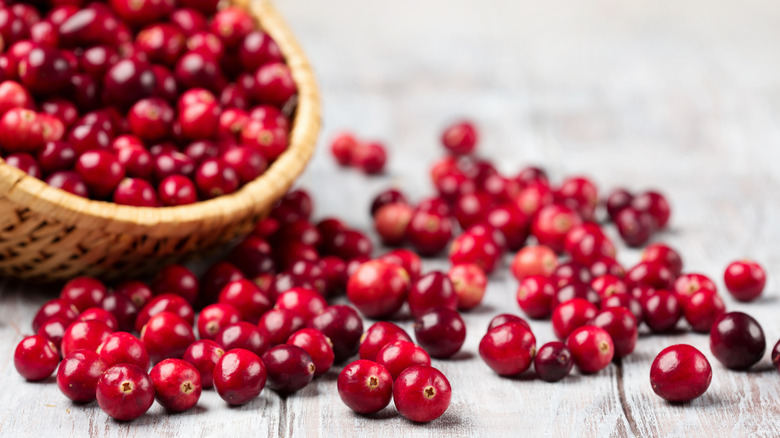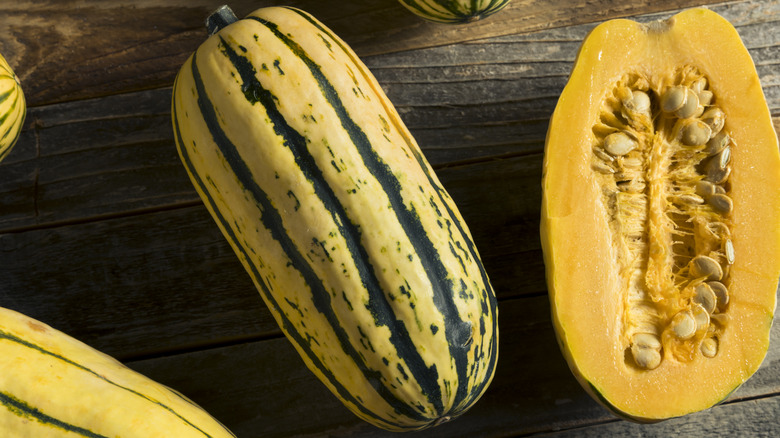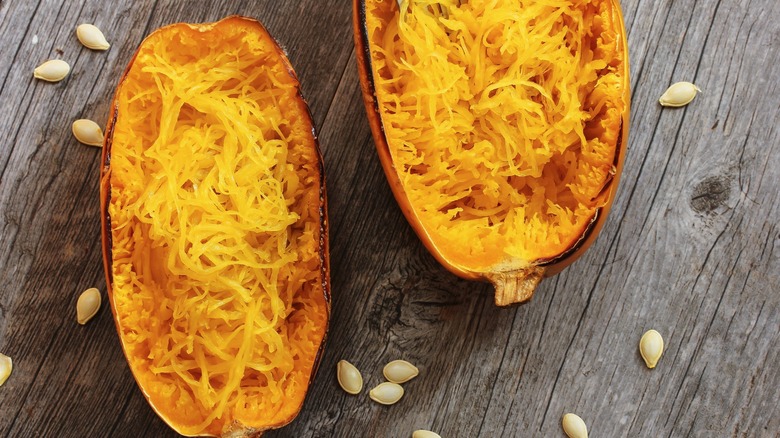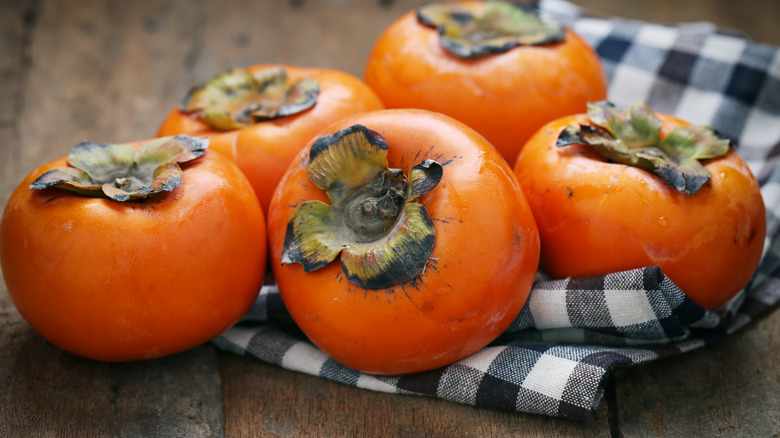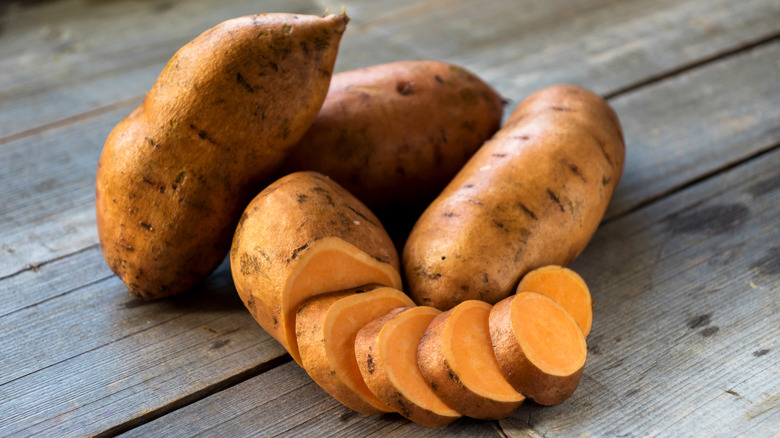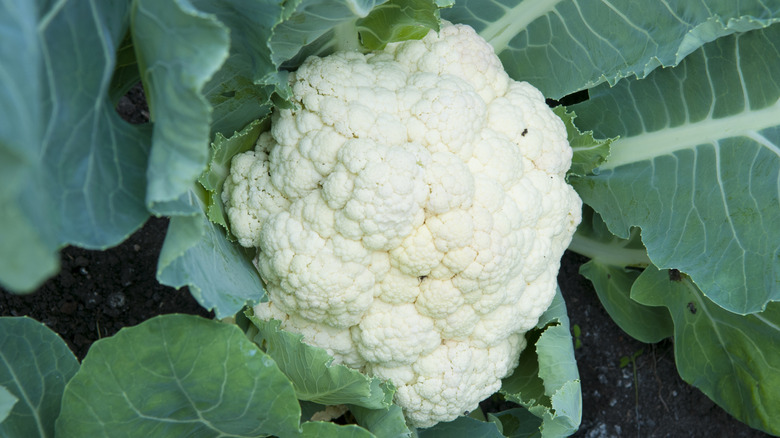Healthy Foods You Should Be Eating This Fall
With fall upon us, you might be seeing some seasonal favorite foods popping up at restaurants and on grocery shelves. Sometimes it seems like every food is pumpkin flavored this time of year. Although pumpkin is great, it isn't the only food in season during the fall. As a dietitian, I always encourage my clients to learn which foods are in season and try to choose seasonal foods whenever possible. The fall season is no exception, there are so many healthy and delicious foods available that can make you feel just as cozy as your pumpkin-based favorites.
The importance of eating with the season
These days almost all produce is available year round, although the cost may differ greatly depending on how far it had to travel to get to your local store. Seasonal, local produce is definitely cheaper due to the decreased travel time and expense. But, aside from a lower cost, there are several benefits of eating foods that are in season. First, they taste better. If a food has been freshly picked and is in season, it tastes amazing. Have you ever tried a tomato straight from the vine during the summer? It's usually incredible! For the best flavor, it's best to eat seasonal foods.
In season foods are also higher in vitamins and minerals. When a fruit or vegetable is harvested, it automatically begins to lose nutrients. The further food has to travel, the more nutrients it loses. Not only that, exposure to heat, sun, and air tend to reduce nutrition content even further. You can get berries in the middle of winter, but they probably were grown in a different hemisphere and won't be nearly as tasty or nutritious as the ones you can purchase mid-summer. Not to mention the price tag will likely be incredibly high! It's best to stick with seasonal produce and here are some of the healthiest, and tastiest, fall favorites to try this season.
Pumpkin
Of course I have to start with the fall staple, pumpkin. Although some of the pumpkin flavored items are fun for the season, like lattes, cookies, and other treats, these options are not going to be as healthy as eating the pumpkin itself. Yes, it is edible on its own and not just for pie filling or jack-o-lanterns.
Pumpkin's orange color means that it is high in beta-carotene, a plant-based form of vitamin A, necessary for vision and healthy skin. Pumpkin is low in calories with only 49 per cup, but high in potassium, fiber, and vitamin C. The vitamins C and A in pumpkin can help us stay healthy during flu season that also starts in the fall. The antioxidants in pumpkin have also been found to be particularly powerful in helping control blood sugar and blood pressure.
If you want to eat more than just pumpkin-flavored items this fall, consider buying a whole, fresh pumpkin for maximum benefits. If you do buy canned pumpkin, make sure it only has one ingredient — "pumpkin" — without any added sugar or preservatives. Once you have your pumpkin of choice, you can add it to soups or casseroles or just eat it roasted.
Apples
Although apples are usually available year-round, they are considered a seasonal fall fruit and usually taste best during this time. Also, who doesn't associate a delicious apple pie with the fall season?
You may have heard the old saying "an apple a day keeps the doctor away" and this has actually turned out to be true. Apples are incredibly high in antioxidants and fiber. They have been found to be beneficial for preventing or managing multiple diseases from cancer, to diabetes, to heart disease. The secret to all these health benefits lies in the multiple antioxidants they contain, such as quercetin, catechins, and flavonoids.
Apples can be eaten in a variety of ways, but are great for an on-the-go, portable snack. Add apple slices to salads for a kick of sweetness or mix them with some spicy sausage for a savory and sweet dish. Consider eating different types of apples too, as each has a slightly different nutrient profile.
Pomegranates
Pomegranates, although not as common as apples, have jumped onto the health food scene in the last few years as a powerful "super food." This Middle Eastern fruit is about the size of an apple and contains deeply colored red seeds that provide incredible nutrient and antioxidant content. The sweet seeds can be eaten raw or made into a deep red-colored juice.
The nutrient benefit of pomegranates comes from powerful antioxidants called punicalagins and punicic acid, which have been shown to be more powerful than the antioxidants found in green tea or red wine. These antioxidants are highly anti-inflammatory and may help prevent a variety of diseases from cancer to Alzheimer's.
If you want to add pomegranates to your diet, the best way is to eat the raw seeds. Some grocery stores sell the seeds alone, removed from the fruit. If you do purchase a whole pomegranate to eat, make sure you have plenty of napkins close by because the juice is quite powerful. In addition to eating them by themselves, you could also add the seeds to salads for a pop of red color. Although pomegranate juice does contain antioxidants, commercial varieties are also quite high in sugar, and therefore should be consumed in moderation.
Parsnips
Parsnips are a white colored root vegetable that look similar to carrots. They can also be used in the same manner as carrots due to their hearty, dense texture.
Parsnips are low in calories, but incredibly high in fiber with over six grams of fiber per cup. Fiber is exceptionally beneficial for digestion, lowering cholesterol, and weight maintenance. Parsnips are also loaded with minerals from the soil such as potassium, magnesium, zinc, and iron. The minerals they contain make them incredibly beneficial for heart health. They are also high in folate, a vitamin that has shown to lower the risk of birth defects.
If you want to add fresh parsnips to your diet this fall, before eating it you will need to peel it and cut off the top as you would a carrot. They can be added to soups and stews or they can be eaten on their own prepared roasted, steamed, or boiled. They can also be boiled and mashed for a lower carbohydrate version of mashed potatoes.
Cranberries
Cranberries are almost as popular as pumpkin in the fall season since cranberry sauce is a Thanksgiving staple. The only problem with cranberries is that they are exceptionally tart and most people probably can't tolerate their natural flavor. But, luckily, there are a lot of healthy ways to add cranberries to your diet this fall while still enjoying their flavor.
This tiny, yet nutritionally powerful berry is incredibly high in antioxidants. Cranberries have been shown to be beneficial for several medical conditions including lowering the risk of cancer, decreasing blood pressure, and improving immune function. Cranberries have also been frequently studied for their benefits in preventing urinary tract infections and keeping the bladder healthy.
Cranberries are best enjoyed dried, which makes them sweet, similar to raisins. Dried cranberries can be used to top hot cereals or added to baked goods, but look out for added sugar as it can also add a lot of calories. The same goes for cranberry juice, which is usually mixed with other fruit juices to add sweetness.
Delicata squash
Delicata squash is my favorite winter squash by far. It is an oblong shape and a yellow-ish, green color. After roasting, it is sweet and tastes almost like summer corn — delicious. It can be eaten on its own or stuffed with a variety of toppings.
Delicata squash is high in fiber, containing up to six grams per cup. Most of the fiber is found in the skin, which is edible after cooking, so don't toss it out as you can eat the whole thing. Its yellow color indicates that it is high in vitamins A and C, both important for immune function. It is also high in minerals such as iron, calcium,and potassium.
The delicata squash has a thin skin, making it cook quicker than some other squash varieties. It can be diced up and sautéed with a dash of cinnamon to bring out the sweetness, or it can be roasted similar to other types of squash. Its flavor is also mild enough that it can be stuffed with chicken or other savory meats for a delicious blend of salty and sweet.
Spaghetti squash
Spaghetti squash has become quite popular in recent years as a lower carbohydrate alternative to spaghetti. Once cooked, the flesh of the squash separates into spaghetti like "strands" that have a starchy consistency similar to pasta. The flavor of the squash is mild so that toppings can be easily added to recreate a lower carb version of any favorite pasta dish.
It is also popular because it is quite low in calories when compared to pasta. A cup of spaghetti squash only has about 42 calories, whereas a cup of pasta has around 250 calories. It is also high in fiber as well as vitamins A, C, B1, B2, and B3. It is high in lutein and zeaxanthin, antioxidants that have been linked to a reduced risk of age-related vision loss.
A spaghetti squash can be baked or microwaved. Once the flesh has softened and the squash has cooled a bit, remove the seeds and use a fork to shred the squash into the spaghetti like strands. It can be topped with your favorite spaghetti sauce from marinara to alfredo.
Persimmons
Persimmons are my favorite fall fruit. Their delicate flavor is different from other, more common fruits and the fact that they are only available for a short time during the year makes them even more desirable. If you are not familiar, a persimmon is an orange-colored fruit about the size of a small to medium apple.
As with many of the other fall favorites, its orange color indicates the persimmon is high in vitamins C and A. Its high tannin content, a powerful antioxidant, has been shown to reduce risk of cancer, heart disease, diabetes, and high blood pressure. Persimmons may even help alter alcohol metabolism, reducing the severity of hangovers. Persimmons are best eaten fresh and raw, but knowing they may help prevent hangovers you may want to consider adding them to a delicious fall-themed cocktail.
Sweet potatoes
Sweet potatoes are an amazing source of beta-carotene due to their deep orange color, but they don't only come in orange; they can also be white or purple and those varieties can contain even more nutrients.
One sweet potato provides over 200 percent of the vitamin A needed for the day. Sweet potatoes are also high in vitamin C, vitamin B6, and several different minerals. They are rated lower on the glycemic index than regular white potatoes, which means they don't raise blood sugar as quickly. Purple colored sweet potatoes in particular have been found to lower blood pressure, help control blood sugar, and showed a high-level of antioxidant activity. Eating a combination of sweet potatoes, as there are over 200 varieties, will help you get the best benefit.
Sweet potatoes can be baked or roasted and eaten plain, although they do taste great with a bit of butter, which also helps your body absorb the fat-soluble vitamin A. A dash of cinnamon or nutmeg also helps bring out the flavor and they can be mashed or added to casseroles or soups similar to potatoes.
Cauliflower
The bland taste of cauliflower makes it a versatile vegetable that can easily be incorporated into any dish. Cauliflower is incredibly low in calories, yet very high in fiber. It is high in vitamins C, K, B6, and folate and cruciferous vegetables, like cauliflower, have been shown to be beneficial for reducing risk of gastrointestinal and lung cancer.
Cauliflower tastes amazing roasted and topped with a little bit of parmesan cheese. Or roast it then mash it, like you would a potato. Roasting isn't your only choice either, as it can also be eaten raw or pickled, or added into soups, stews, or even smoothies for an extra fiber boost.
Find your fall favorites
There are many other seasonal fall foods that you can add into your diet this season. The important thing for a healthy diet is to eat a wide variety of fruits and vegetables, doing your best to make each meal look like a rainbow. But, you should also eat foods you really enjoy. Do a little bit of experimenting this fall by trying a new seasonal food or recipe. Who knows, maybe this is the year persimmons will take over the crown as the reigning fall food.
